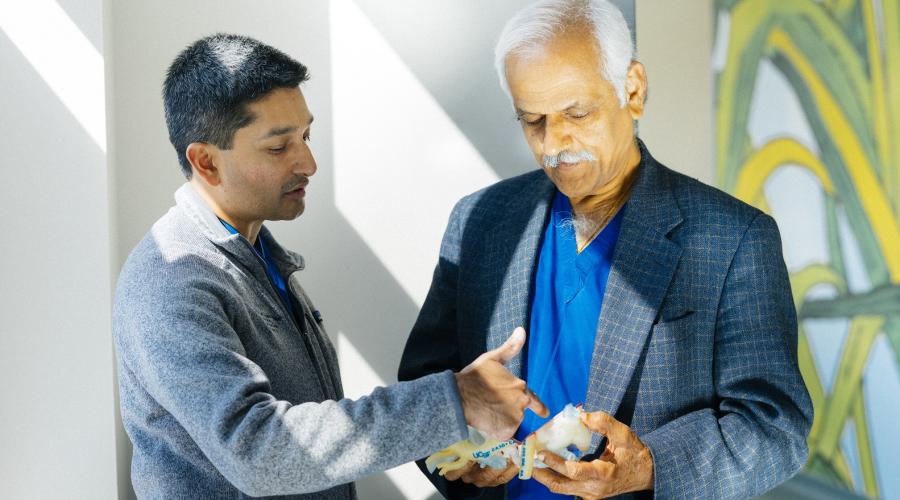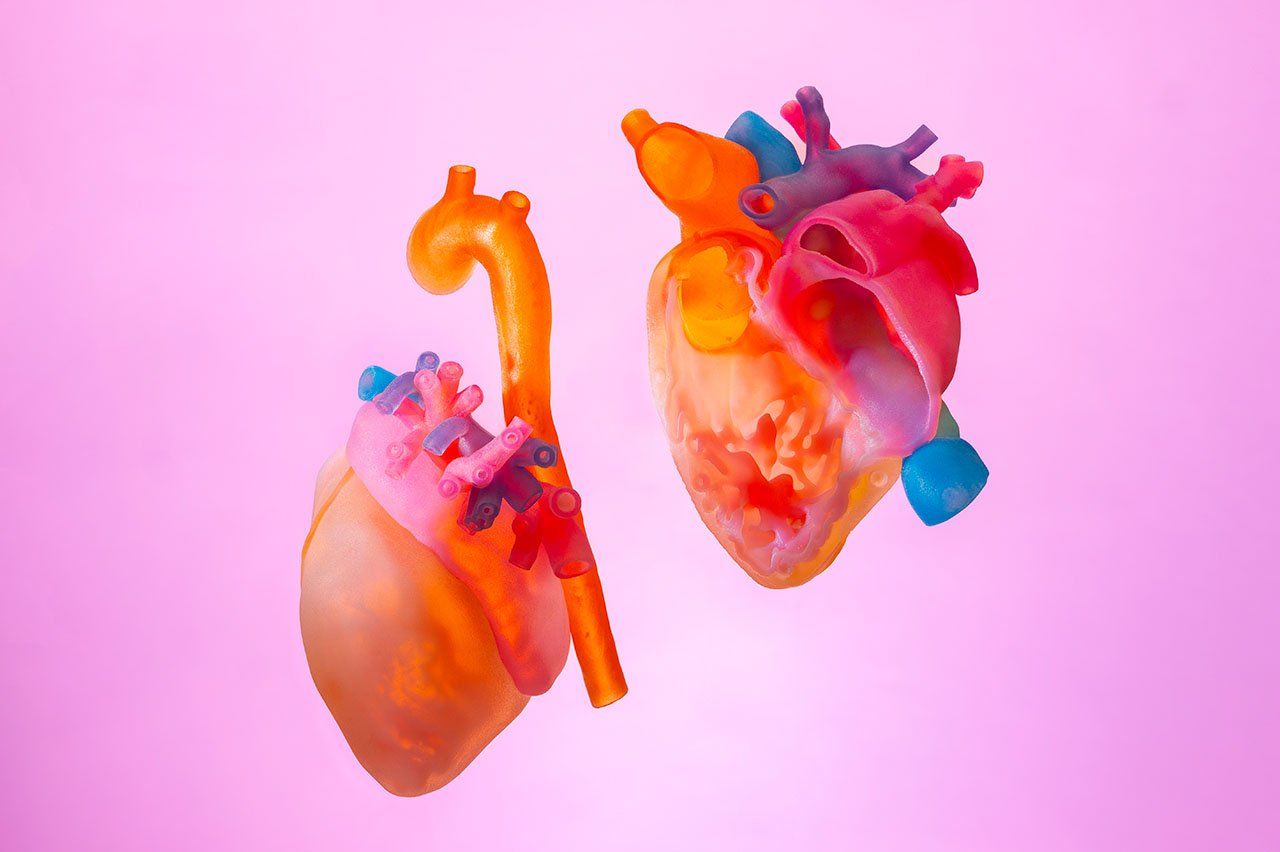
A Heart in Your Hands: How 3D+ Simplifies the Most Complex Medical Problems
Imagine holding a replica of your child’s heart while the doctor shows you exactly what the issue is and how they’ll fix it. The surgeon has been practicing on the precise model, perfecting the placement of every cut and stitch.
At UCSF, this is how advanced 3D+ technologies, including 3D printing and advanced visualization systems like augmented, virtual, or mixed reality, are breaking down complex medical problems for families and helping providers plan the best care possible. By merging hundreds of individual images from scans, 3D modeling can form a detailed three-dimensional model of a person’s anatomy that can be viewed digitally or printed and examined physically.
“3D+ technologies allow us to study the specifics of a patient’s body in a completely new, non-invasive way, and nearly every pediatric surgical subspeciality at UCSF has utilized the advantages 3D modeling provides,” said Shafkat Anwar, MD, a UCSF professor of pediatrics and radiology in the Division of Cardiology.
Anwar is medical director and co-founder of UCSF’s Center for Advanced 3D+ Technologies, a hub for collaborations that applies cutting-edge visualization and manufacturing to tackle the most challenging clinical cases and better counsel patients.
Serving Small Patients
“Our pediatric surgeons routinely work on walnut-sized hearts with vessels as thin as a few strands of hair. 3D models put the patient’s anatomy into the surgeon’s hands so they can practice complex procedures before they’re in the operating room,” said Anwar.
By exploring the inner workings of the 3D models, surgeons can also find solutions that would have otherwise eluded them. With one patient who had already endured three open heart surgeries due to a defect in one of their heart’s pumping chambers, pediatric heart surgeon Mohan Reddy, MD, had to decide on a risky fourth procedure.
When Reddy physically opened the model of the child’s heart to inspect its hidden details, he saw a safe route for a two-ventricle repair that was previously hidden and would improve the patient’s chance of increased, long-term vitality.
After the successful surgery, Anwar presented the model at the World Congress of Pediatric Cardiology and Cardiothoracic Surgery to showcase the transformative impact of 3D technology.
“3D modeling is now used to evaluate almost every child at UCSF who faces high-risk surgery due to complex congenital heart disease, where there are problems with the structure of the heart. Feedback from these collaborations with Dr. Reddy and other surgeons confirm that this technology helps them better plan procedures and avoid complications in the operating room,” said Anwar.

A New Frontier of Medicine
Since 2018, the Center for Advanced 3D+ Technologies has designed over 700 3D models from patient scans and printed them with in-house 3D printers capable of materials as soft as skin or as rigid as bone. More recently, they introduced sterilizable 3D models, safe for patient contact in the operating room.
The models have been historically produced on UCSF’s Mission Bay campus, and a new expansion at UCSF Benioff Children’s Hospital Oakland, a level 1 trauma center, includes a new 3D printing lab. State-of-the-art equipment will enhance care for our most critical patients and enable expanded services across UCSF, including patient-specific implants and custom guides to show surgeons where to cut with improved accuracy.
“3D+ technologies have transformed the standard of care at UCSF for complex cases and brought parents great clarity into the procedures their children are undergoing. When a physical 3D model isn’t feasible, we provide families easy access to digital 3D models,” said Anwar, who also uses 3D models to teach medical trainees.
With Anwar at the forefront of the 3D+ movement in medicine, future innovations will continue to improve care for children and help their parents feel at ease about complex procedures. “The model explained what was repaired and showed me that in time, all of her heart will work the way it should,” said one parent after a successful heart surgery on their child.
To learn more, view Dr. Anwar's Our Calling video or visit the UCSF Center for Advanced 3D+ Technologies.
